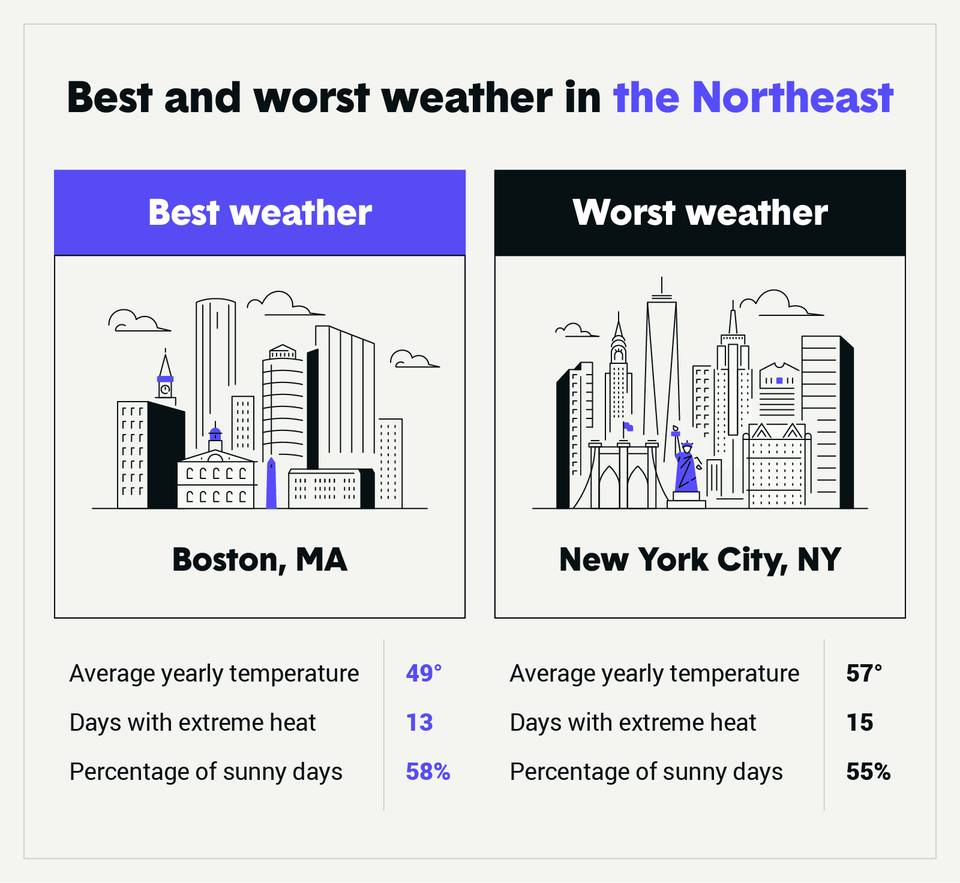It’s easy to wonder if the grass is greener on the other side. That’s especially true if you’re melting through a 100-degree winter or plowing through six inches of snow every January. Extreme weather may have you daydreaming of a Florida beach home or a cozy, lakeside cabin, so we set out to learn which cities have the best and worst weather in the U.S.
We collected data from the National Oceanic and Atmospheric Association’s weather data to learn which cities have the most sunshine, rain and snowfall every year, as well as their average temperatures and how extreme their hottest and coldest days get.
While guaranteed sunshine or milder temps might be a dream come true, the extreme heat that comes from these climates can really exhaust your air conditioning, and the extra humidity can damage your roof and shingles. On the other hand, cold and snow put you at a higher risk of an auto accident and require extra car maintenance, and heavy branches and ice can damage your home, too.
We calculated the cities with the best weather by determining which have the most moderate temperatures and rainfall, while still soaking up plenty of sun for your safety and enjoyment. Here are the best cities for weather in the U.S.:
- Miami, FL: best weather in the South and best city for rain
- Kansas City, MO: best weather in the Midwest
- Boston, MA: best weather in the Northeast
- San Francisco, CA: best weather in the West
- Cleveland, OH: best city for snowfall
- Albuquerque, NM: best city for sunny days
- Phoenix, AZ: best city for extreme heat
- Minneapolis, MN: best city for cold-weather
Keep reading to check out where the grass really is (and isn't) greener and potential concerns for your home insurance.







